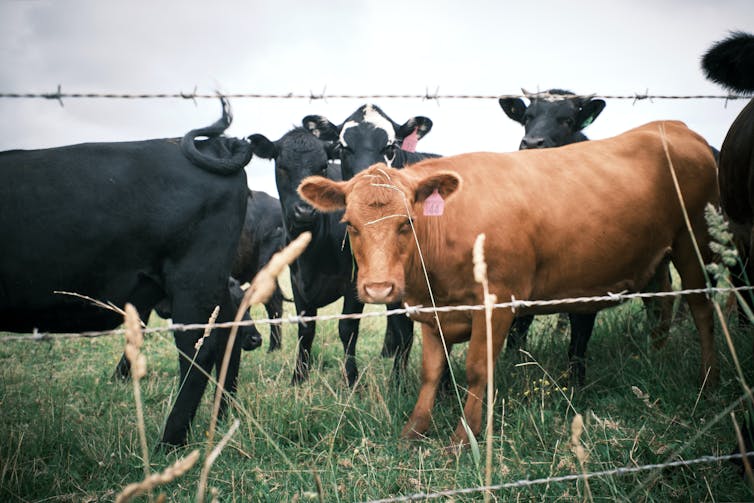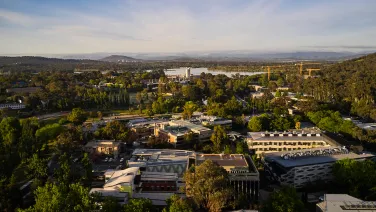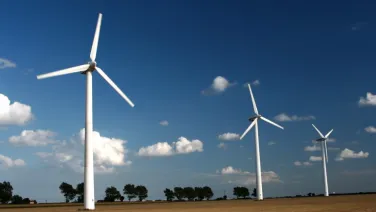
No, signing the global methane pledge won’t end the backyard barbecue – it’ll strengthen Aussie industries
Australia has just joined 122 other nations in signing a pledge to reduce methane emissions by at least 30% from 2020 levels by 2030. It was a long time coming: Australia, under the Morrison government, refused to commit when the pledge was first announced at the COP26 climate summit last year.
Methane has caused almost half the net rise in global average temperature since the pre-industrial era. The atmospheric concentrations of methane are now almost triple pre-industrial levels, and rising swiftly. Cutting it back would significantly help limit climate change.
Nationals leader David Littleproud claims signing the pledge will threaten the backyard barbecue, as most of Australia’s methane emissions come from the agriculture industry (in the form of livestock emissions) followed by coal and gas mining.
Meeting the methane pledge in full will indeed require substantial investment to change these key emitting industries. Doing so will help position those industries to address climate change, increase their sustainability and boost profits.
How methane affects global warming
As a potent greenhouse gas, methane acts to prevent some radiative heat from the Earth escaping out into space. Every emission of methane makes the planet warmer, regardless of whether it arises from fossil fuel or biological sources.
A kilogram of methane has 27 to 29.8 times the warming effect over a 100-year period than a kilogram of CO₂. But unlike carbon dioxide, which can stay in the atmosphere for many decades, methane is relatively quickly removed from the atmosphere by chemical reactions, having a lifespan of about 12 years.
The recent rapid increases in atmospheric methane concentrations of over 100 parts per billion in the last decade appear to be caused by a worrying positive feedback.
Rising global temperatures increase both the methane emissions from warming wetlands and more frequent and larger fires. At the same time, they lengthen the life of methane in the atmosphere, further increasing temperatures.
The 30% reduction in methane emissions takes us about halfway to the reductions needed to meet the Paris Agreement temperature goals of limiting global warming to between 1.5℃ and 2℃ above pre-industrial levels this century.
Where Australia’s methane emissions come from
The agriculture sector is Australia’s biggest methane source, emitting about 60 million tonnes of CO₂-equivalent per year. This is followed by fugitive emissions (mostly leakage from coal and gas mining), which is responsible for about 34 million tonnes of CO₂-equivalent.
Coming in equal third are landuse-change and forestry, and waste each with about 12 million tonnes. Energy production, transport and industrial processes each emit small amounts.
Methane from agriculture arises mostly through the fermentation of feed during digestion of ruminant animals (such as cattle, sheep and goats) and from animal manure. Small amounts come from rice production and crop waste burning.
As a result, emissions tend to go down with droughts (when there are fewer animals, each eating less) and up in the good years.
Thankfully, there has been a long-term decline in agricultural methane emissions of about 15% since 2000, largely reflecting a decline in sheep numbers and improved animal and feed management.

The agriculture industry is responsible for most of Australia’s methane emissions. Nikolas Gannon/Unsplash
Likewise, emissions from landuse-changes have also reduced, reflecting steep declines in land-clearing since about 2007. So have emissions from the waste sector, due to improvements in waste collection and management, and methane capture. Both sectors have shown about a 30% reduction over the past two decades.
The amount of fugitive emissions, however, are subject to some dispute. The International Energy Agency earlier this year revised the national numbers upwards for fugitive emissions, based on satellite analysis and on-ground measurement. It effectively doubled the estimates of annual emissions from this source.
The revised numbers put fugitive emissions on par, or ahead of, agriculture. Of the mines assessed, open pit mines show the largest emissions.
Australia needs more direct measurements and effective integration of satellite and other analyses of fugitive emissions from such mines. This will improve our emissions assessments, better target any emission-reduction activities and evaluate their effectiveness.
How the pledge could impact these industries
The methane pledge is voluntary and includes a global reduction target, so there won’t likely be direct sanctions applying to specific national industries if they don’t achieve this target.
However, reducing methane emissions may become critical if some nations include agriculture in any carbon border adjustment mechanisms, which place taxes on high-emitting imports. From this perspective, near-term action may be strategically sensible.
Additionally, emissions reduction is aligned with good practice in most major emitting industries.
In livestock, for example, methane emissions constitute a loss of about 6% of the feed energy consumed and sometimes more. Reducing these losses is expected to increase animal performance. There are several existing ways to bring such emissions down, as well as emerging options.
These include improved feed quality, dietary oils and fats, feed supplements and, potentially, vaccines. But existing options alone will be hard-pressed to deliver overall 30% methane emission-reductions, while maintaining historical levels of productivity.
In landfill, methane emissions can be profitably captured and used to either generate electricity or potentially be cleaned and fed into the natural gas supply system.
Programs that separate food scraps from general waste and then use the scraps in biogas generators could significantly increase the efficiency of capture, producing valuable fertiliser in the process.
The coal and gas industries often capture and burn fugitive methane emissions (flaring) to try to convert them into the less-harmful carbon dioxide. However, this practice is often ineffective, and causes air pollution and problematic health outcomes.
There are alternative options, such as using fugitive emissions to generate electricity, but these need broader adoption. Additionally, there is a further incentive to reduce leaking methane (natural gas) from distribution networks, as it results in both financial losses and potential danger in some situations.
Sectors such as agriculture and mining are clearly vulnerable to climate change. By undertaking effective and rapid action to reduce methane emissions, they will be exposed to lower risks and will have reduced climate adaptation costs.
What this means ahead of COP27
Signing the methane pledge bodes well for Australia at the upcoming COP27 climate change summit in Egypt next month.
It aligns Australia with most of our trading partners and will enable discussions to move on to other pressing international climate change issues.
It reduces somewhat the spectre of challenging border-adjustment mechanisms. And it will likely encourage building the international research and development coalitions to deliver the next tranche of methane emission reductions: 60% reductions by 2050.
Lastly, it’s likely to help Australians realise that, in most cases, reducing methane emissions is just good business, now and for the future.
By Mark Howden, Director, ANU Institute for Climate, Energy and Disaster Solutions, Australian National University
This article is republished from The Conversation under a Creative Commons license. Read the original article.
Top photo: Kat Von Wood/Unsplash CC0



